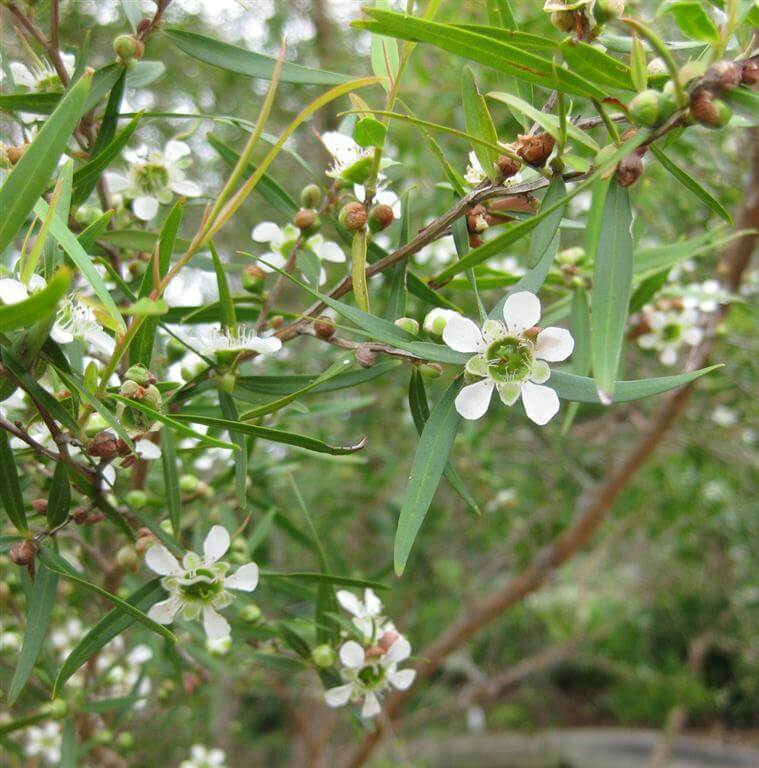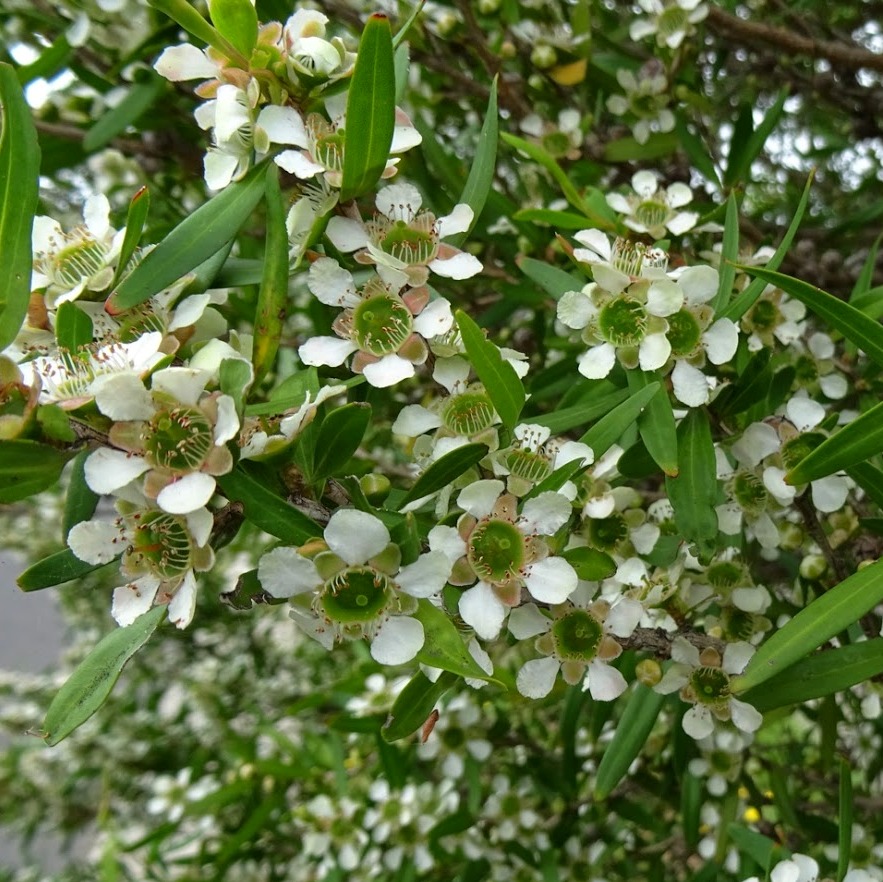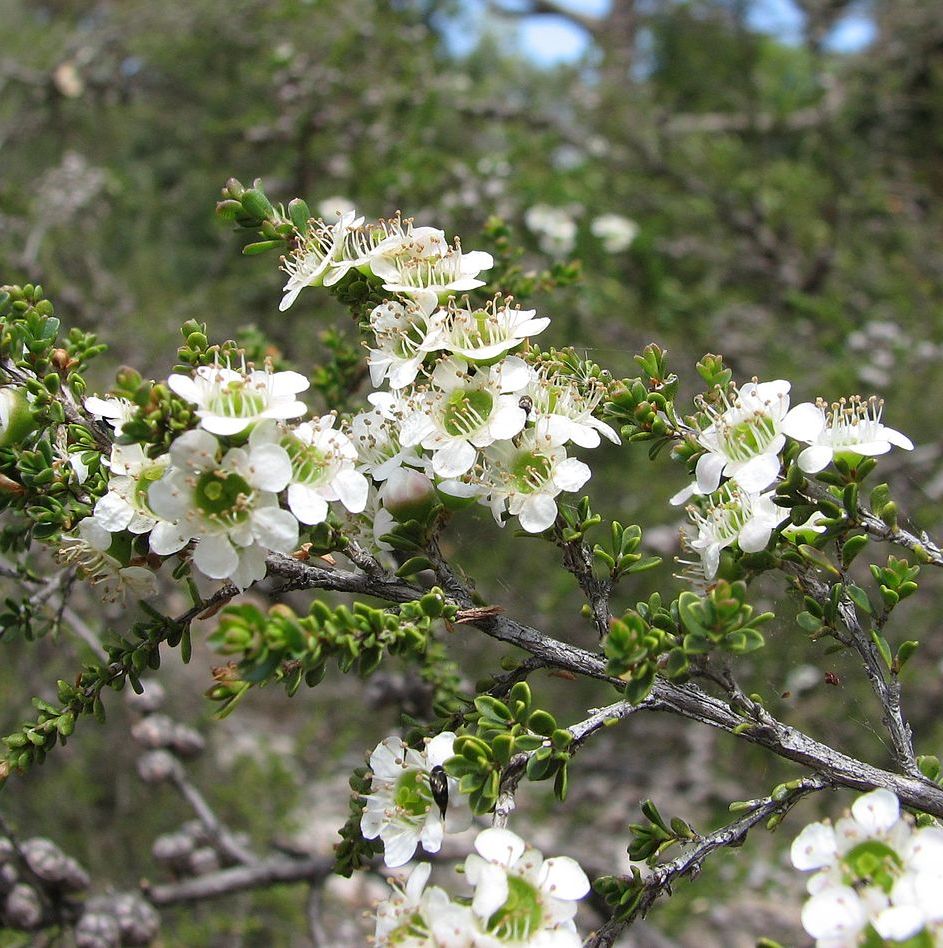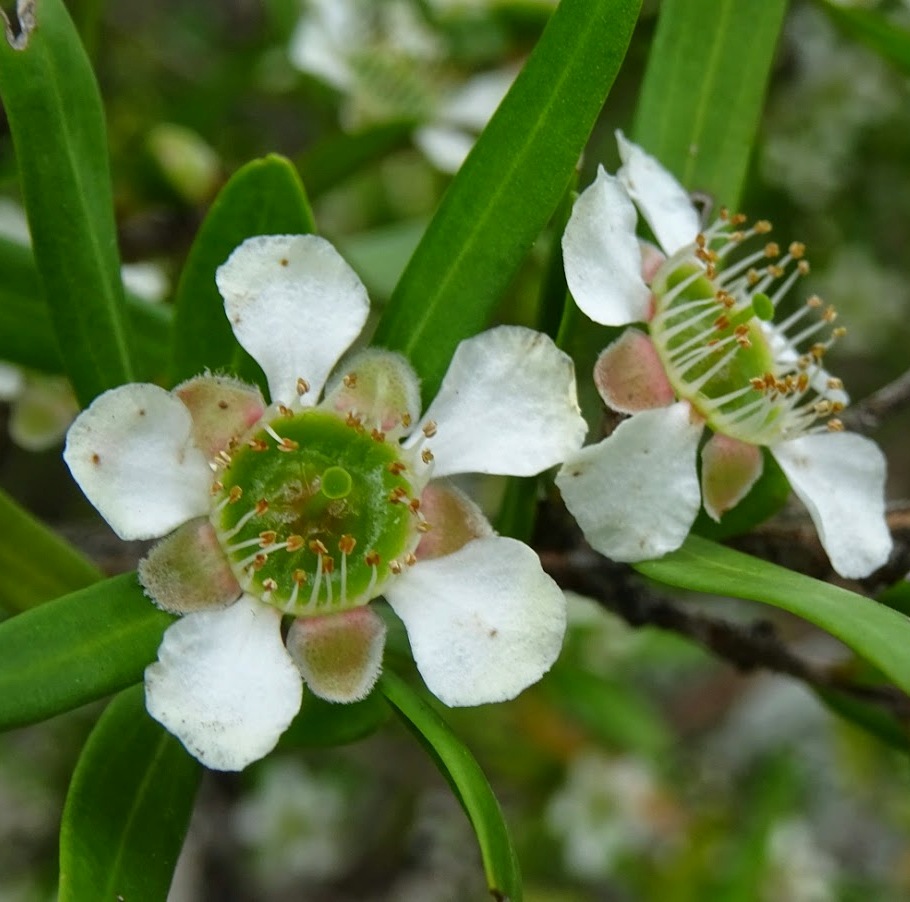.png)
.png)




Botanical names Melaleuca alternifolia
Source Leaves
Family Myrtaceae
Origin Australia
Processing Method Steam Distillation
Description / Color / Consistency A thin, clear, pale yellow liquid.
Aromatic Summary / Note / Strength of Aroma A middle note with a medium aroma, Tee Tree has a fresh, slightly medicinal scent with characteristic woody, camphoraceous notes.
Blends With Cinnamon Bark, Clary Sage, Clove Bud, Geranium, Lavender, Lemon, Nutmeg, Rosewood, Rosemary and Thyme.
Product Abstract
Tea Tree oil, also known as Leptospermum petersonii or Melaleuca oil, is one of the most widely used and extensively researched essential oils, making it a must-have for every home. Because the benefits of Tea Tree lemon oil include cleansing properties and a refreshing scent, this versatile oil can be used for everything from home cleaning solutions to skin care.
Keep a bottle of Tea Tree lemon essential oil in your house to make homemade household cleaners, air fresheners, and linen spritzers. You can also find Tea Tree oil uses in your personal care and beauty routine.
History
1770, Captain James Cook landed at Botany Bay, Australia – near where Sydney is now. From there, he traveled north through the coastal regions of New South Wales. During this trek, he and his crew noticed the massive groves of trees thick with sticky, aromatic leaves.
The local natives told him about the healing powers of these trees. The leaves of this tea tree had been used for many years, by these people, to treat cuts and wounds. Crushed leaves were applied directly to an injury, then held in place with a mud pack. This poultice helped fight infection in the wound.
Harvesting/Extraction Information
Unlike the name suggests, the essential oil of tea tree is not extracted from the plant commonly associated with tea as a beverage. Neither is it related to tea oil, which is extracted from the seed of the tea plant. Instead, it is extracted through steam distillation of twigs and leaves of tea tree, which has the botanical name Leptospermum petersonii. The tea tree is native to Southeast Queensland and New South Wales, in Australia, which is why it is such a popular essential oil in that country. However, its impressive qualities have spread to other parts of the world, so it can now be found internationally.
Common usage
Caution
Although there are no inherent risks of topically applying tea tree oil, in some rare cases, people may be overly sensitive to the oil, as a form of a minor allergenic. Melaleuca oil is clearly a powerful cleansing agent for better health, but should not be directly consumed. This is meant as a topical agent, and should not be trusted as an antibacterial agent for oral consumption. As with any new herbal remedy being added to your health regimen, speak to a trained medical professional before making any major changes. The side effects of cionsuming tea tree essential oil can be quite serious, and they include confusion, hallucinations, drowsiness, coma, unsteadiness, severe rashes, vomiting, diarrhea, general weakness, stomach upset, and blood cell abnormalities. It should always be kept away from pets and children.
Key constituents
Terpinen-4-ol 30.0–48.0%
g-Terpinene 10.0–28.0%
1,8-Cineole tr–15.0%
a-Terpinene 5.0–13.0%
a-Terpineol 1.5–8.0%
p-Cymeme 0.5–8.0%
a-Pinene 1.0–6.0%
Terpinolene 1.5–5.0%
Sabinene tr–3.5%
(þ)-Aromadendrene tr–3.0%
d-Cadinene tr–3.0%
Ledene (viridiflorene) tr–3.0%
(þ)-Limonene 0.5–1.5%
Globulol tr–1.0%
Viridiflorol tr–1.0%
Quality Tea tree oil also contains 0–0.06% methyleugenol. The following comments were made in an EU report: ‘The stability of tea tree oil in cosmetic formulations is questionable. A standardized method for the specification of tea tree oil is needed. Industry should develop an analytical testingmethodbasedon typical degradationproducts to ensure and control the stability of the material.’ Since then, an RIRDC report has addressed these issues.
Safety summary
Hazards Skin sensitization.
Cautions Old or oxidized oils should be avoided.
Maximum dermal use level 15%
Our safety advice
Whether for clinical use or in personal care products, a safe and effective concentration of unoxidized tea tree oil is likely to be in the 10–20% range. Therefore, we propose a 15% maximum. Oxidation of tea tree oil should be avoided by storage in a dark, airtight container in a refrigerator. The addition of an antioxidant to preparations containing it is recommended. Undiluted tea tree oil should not be used on the skin, because of the risk of sensitization.
Regulatory guidelines
Germany’s Bundesinstitut fu¨r Risikobewertung (BfR), or Federal Institute for Risk Assessment, has recommended limiting the concentration of tea tree oil in cosmetic products to a maximum of 1%. COLIPA made a similar recommendation, and added that manufacturers should consider using antioxidants in products containing tea tree oil, and/or specific packaging to minimize exposure to light. Tea tree oil is classed as a ‘Schedule 6’ poison in Australia. Substances in this category are regarded as having ‘a moderate potential for causing harm, the extent of which can be reduced through the use of distinctive packaging with strong warnings and safety directions on the label.
Organ-specific effects
Systemic effects
Acute toxicity, human There are five reports of human toxicity following ingestion of tea tree oil. Three of these were children, and in four cases the doses taken were very high. A 17-monthold boy ingested less than 15 mL tea tree oil and suffered ataxia and drowsiness but no mucous membrane damage and no difficulty breathing. He recovered within eight hours. If the boy weighed 12 kg, this is equivalent to <0.8 mL/kg. In a comparable case, a 23-month-old boy swallowed less than 10 mL, with similar consequences and outcome; 15 g of activated charcoal was administered. If the boy weighed 13.5 kg, this is equivalent to 1.35 mL/kg. A 4-yearold boy ingested ‘a small quantity’ of tea tree oil.
Acute toxicity, animal Tea tree oil acute oral LD50 1.9 g/kg in rats; acute dermal LD50 >5 g/kg in rabbits. When administered as a single oral dose to rats, tea tree oil was lethal at approximately 1.9–2.6 mL/kg; when administered
dermally to rabbits at 2 g/kg, there were no apparent signs of toxicity. A total of 60 mL of undiluted tea tree oil was topically applied to three cats as a treatment for severe flea bites and to prevent further infestation. The cats had previously been shaved but there were no nicks. Later that day, one cat was hypothermic, uncoordinated and unable to stand; one was comatose with severe hypothermia and dehydration, and one was trembling and slightly ataxic. After intensive treatment two of the cats recovered and one died. The outcome is not surprising considering the massive amount of essential oil used, 20 mL on each cat. Given that a typical cat weighs 3–5 kg, this is equivalent to 4.0–6.6 mL/kg. Unlike humans, cats are deficient in hepatic glucuronyl transferase, and so are not well equipped to metabolize essential oil constituents. They are therefore particularly susceptible to essential oil toxicity. The cat that died had elevated liver enzymes, suggesting hepatotoxicity. Several cases of toxicosis are reported when tea tree oil was applied dermally to dogs and cats. In most incidents the oil was used to treat skin conditions at inappropriate, high doses. Typical signs are depression, weakness, incoordination and muscle tremors. Treatment of clinical signs and supportive care has resulted in complete recovery within 2–3 days.
Antioxidant/pro-oxidant activity At 0.1% in whole blood leukocytes, tea tree oil demonstrated an antioxidant, radical scavenging activity, decreasing intracellular ROS. The antioxidant activity of the oil was significant against DPPH radicals and hexanal oxidation. The relative antioxidant activity of tea tree oil constituents was a-terpinene >
a-terpinolene > g-terpinene. The same three constituents decrease in concentration when tea tree oil oxidizes.
Carcinogenic/anticarcinogenic potential Tea tree oil was not mutagenic in the Ames test. The oil had no mutagenic activity in S. typhimurium strains TA98 and TA100, or on E. coli WP2 uvrA strain, either with or without metabolic activation, but demonstrated no significant antimutagenic activity.
Comments
Bacterial resistance It has been proposed that the habitual use of tea tree oil in products applied to the skin at sub-bactericidal concentrations might encourage resistant strains to develop. However, studies in bacteria and yeasts suggest that any resistance to tea tree oil is transient and/or negligible. This holds true even in bacteria subcultured up to 22 times. In cases where they have an effect on resistance, essential oils in general tend to reduce or eliminate it, rather than increasing it. The effect of personal care products containing essential oil mixtures, with or without tea tree oil, is unknowable, since there are thousands of such products. However, the great variety of these mixtures will make it very difficult for resistance to develop.